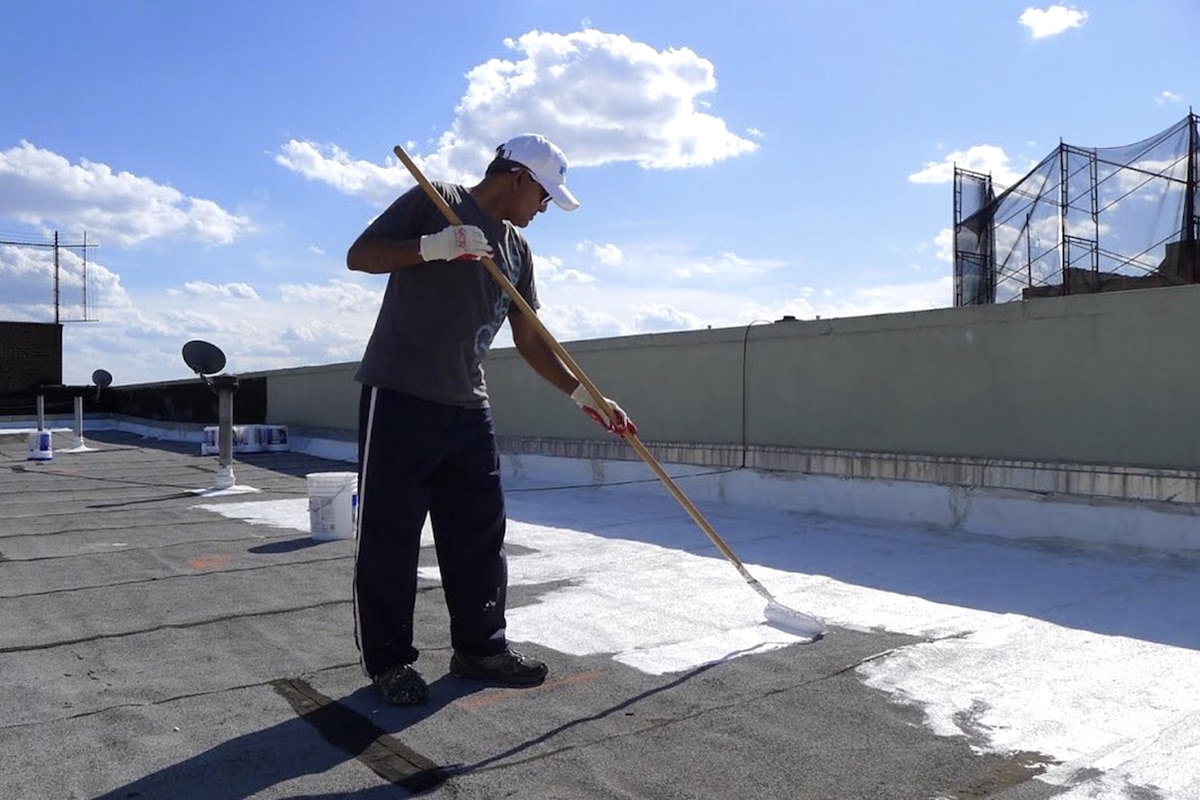How Cities Are Adapting to Climate Change

 Why you can trust us
Why you can trust us
Founded in 2005 as an Ohio-based environmental newspaper, EcoWatch is a digital platform dedicated to publishing quality, science-based content on environmental issues, causes, and solutions.
Some environmental professionals warn us that the time for focusing solely on climate mitigation – that is, preventing warming from happening – is behind us. Instead, they argue that cities need to begin shifting their efforts toward adaptation: responding to the impacts of climate change already happening in many parts of the country, and preparing for those that are inevitable given the current projections for rising temperatures. Even if we stopped burning fossil fuels tomorrow, there is still a 42% chance that we would overshoot our goal of limiting global warming to 1.5 degrees Celsius above pre-industrial levels.
Catastrophic heat waves are no longer outliers, but practically the norm. Urban areas are especially susceptible to dangerous heat waves due to a concept called the “urban heat island effect,” whereby urban areas become warmer than surrounding rural areas. In cities, dark roofs and asphalt absorb heat, and glass windows reflect sunlight onto the ground below. The lack of greenery that often categorizes cities also means less shade, and tall buildings block wind from reaching the sidewalks. According to the U.S. Environmental Protection Agency, these heat islands can be 1-7ºF warmer during the day, and 2-5ºF warmer during the night than surrounding areas.
Hundreds of millions of people already live in urban areas, and according to the Global Center for Adaptation, the urban population affected by heat will rise by 800% by 2050. Getting urban temperatures under control is an issue of equity, too, as the poorest and most vulnerable residents in cities often live in buildings with poorer ventilation or little greenery.
Along with warning systems about heat and other public information campaigns, however, some cities are making architectural and design changes to improve resilience to heat. Here are a few ways cities are innovating and adapting to the effects of heat.
Medellín, Colombia

To combat the urban heat islands effect in Colombia’s second largest city — which is home to 2.5 million people — the government has focused on shade coverage. The Green Corridors (or “Corredores Verdes”) project began in 2017, whereby a network of 30 shaded routes was created connecting parks and other areas of interest across the city. The routes are composed of 12 waterways and 18 roads, providing cooler cycling and walking paths for citizens. To construct the Green Corridors, citizens were trained by the Joaquin Antonio Uribe Botanical Garden to become gardeners and planted 8,800 trees and palms, as well as 90,000 other species of tropical plants to shade the areas.
Green spaces are proven to be effective at cooling cities; the UN Environment Programme states that urban parks have the ability to reduce ambient daytime temperatures in cities by about 1ºC. This cooling phenomenon is evident in the Green Corridors, where temperatures have come down by about 5.5ºF and are expected to fall by several more degrees over the coming decades. The corridors have also improved air quality and overall biodiversity in the city.
Los Angeles, California

Los Angeles is hot — and, as runaway climate change progresses, it’s only going to get hotter. By the middle of the century, Los Angeles could face 22 days of extreme heat every year, according to a 2015 study.
Dark surfaces like asphalt are a major contributor to the urban heat island effect, as they absorb the sun’s rays — 80-95% in the case of dark asphalt — and emit them as heat. As part of a goal from former mayor Eric Garcetti to cool the city by 1.67ºC in 20 years, LA began a campaign to replace these dark surfaces with light ones. The city started experimenting with painting streets white with a CoolSeal coating in 2019, which was originally designed by the military to cool down spy planes and keep them hidden from satellite infrared cameras. As of August 2022, the GAF Cool Community Project finished painting 1 million square feet of roads, playgrounds, and parking lots in the Pacoima neighborhood of LA — some with murals and artwork — with a coating called Invisible Shade.
Streets that have been painted have measured 10-15 degrees cooler on average than those that are unpainted, decreasing the need for air conditioning in nearby buildings. However, because the heat reflects off of the white surface rather than being absorbed, some argue that people walking on the streets will actually experience greater heat than before, even if the surrounding area is cooler.
New York, New York

Since its launch in 2009, New York’s CoolRoofs project has provided paid training and work experience to New Yorkers to cover more than 10 million square feet of rooftops with a reflective covering in an effort to combat the urban heat island effect. The coating used has a high solar reflectivity — the degree to which the roof reflects visible infrared and ultraviolet rays — and infrared emissivity, which means its ability to release absorbed heat.
On an average summer day in New York, black asphalt rooftops can reach 190ºF, which is 90ºF more than the surrounding air. As a part of the city’s goal to cut carbon emissions by 80% by 2050, the project works to keep buildings cool and reduce the need for air conditioning. Some of these cool rooftops can reduce internal building temperature by 30%. The city estimates that for every 2,500 square feet of reflective roofs, NYC’s overall carbon emissions can be reduced by one ton. No-cost installations are available for non-profits, low-income housing, schools, hospitals, and other organizations.
Abu Dhabi, United Arab Emirates

The UAE is often known for its very high temperatures, which can reach over 120ºF, making air conditioning a necessity. In an effort to combat this heat, the city has turned to the old Arabic architectural concept of Mashrabiya, which uses latticed screens to diffuse light as it enters buildings. The 25-story Al Bahar Towers utilize this technique — the facade is covered in shades controlled by a computer, which open and close depending on the position of the sun. These “responsive facades” are coated in fiberglass and arranged in repeating patterns around the building and automatically shut off after the sun goes down. CNN reports that this method means that the buildings can use less artificial lighting and 50% less air conditioning.
Athens, Greece

Like Abu Dhabi, Greece is also turning to ancient architecture for solutions. The city of Athens plans on renovating a historic aqueduct that dates all the way back to the Roman era, with the goal of irrigating the city’s green corridors. The ancient aqueduct began in 125 AD under the emperor Hadrian and was the main source of water for the city for over a millennium, although it’s no longer used for this purpose. This warm, Mediterranean city — which has very little green space — plans to use this underground water to green areas throughout the city and help reduce average daily temperatures.
Subscribe to get exclusive updates in our daily newsletter!
By signing up, you agree to the Terms of Use and Privacy Policy & to receive electronic communications from EcoWatch Media Group, which may include marketing promotions, advertisements and sponsored content.

 233k
233k  41k
41k  Subscribe
Subscribe 




